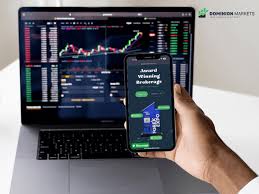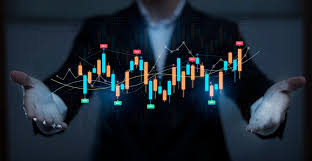
Understanding Forex Paper Trading: A Beginner’s Guide
Forex paper trading is an essential practice for both novice and experienced traders looking to enhance their skills without the financial risks associated with live trading. By simulating trades using virtual money, traders can experiment with different strategies, gain experience, and build confidence. If you are considering stepping into the world of Forex trading, understanding paper trading is crucial. In this comprehensive guide, we will delve into the various aspects of Forex paper trading, including its benefits, strategies, and how to get started. Additionally, for those seeking trading platforms, you can find the forex paper trading Best UAE Brokers that provide excellent paper trading options.
What is Forex Paper Trading?
Forex paper trading allows traders to practice their trading strategies in a risk-free environment. It involves executing trades using a simulated trading account, where all trades are recorded just like in real trading but without any actual financial transactions. This practice helps traders develop their skills, understand market dynamics, and refine their strategies without the pressures of real-money trading.
Benefits of Forex Paper Trading
There are several benefits associated with Forex paper trading, making it an invaluable tool for both beginners and seasoned traders:
- Risk Management: Traders can experiment with various strategies without the fear of losing real money. This is especially helpful for beginners who may not be familiar with the Forex market.
- Strategy Development: Traders can test different trading strategies to discover what works best for them. This includes testing various technical indicators, time frames, and trade setups.
- Market Familiarization: Engaging in paper trading helps traders understand market behavior, price movements, and trading patterns, which can be crucial for successful trading.
- Building Confidence: By simulating trades and seeing positive results, traders can build confidence before transitioning to a live account.
- Learning from Mistakes: Paper trading provides an opportunity to learn from mistakes in a risk-free environment. Traders can analyze their performance without the stress of financial consequences.
How to Start Paper Trading
Getting started with Forex paper trading is relatively straightforward. Follow these steps to set up your paper trading experience:
- Choose a Trading Platform: Select a Forex trading platform that offers a paper trading feature. Many brokers provide demo accounts to simulate live trading conditions.
- Open a Demo Account: Register for a demo account on your chosen platform. This account will provide you with virtual funds to trade.
- Set Up Your Account: Familiarize yourself with the trading platform. Understand how to place trades, set stop losses, and manage your account settings.
- Define Your Goals: Set clear goals for your paper trading experience. Whether it’s testing a specific strategy or improving your trading discipline, having goals will help you stay focused.
- Start Trading: Begin executing trades using your demo account. Track your performance and analyze your trades regularly.

Developing Effective Paper Trading Strategies
While paper trading, it’s essential to develop and refine your trading strategies. Here are some tips for effective strategy development:
- Set Realistic Expectations: Remember that while paper trading can mirror actual trading conditions, the psychology of trading with real money can be vastly different. Set achievable goals and avoid overleveraging your virtual funds.
- Diversify Your Trades: Try out different assets, currency pairs, and trading styles. Diversification will help you understand different market dynamics and identify what suits you best.
- Keep a Trading Journal: Document your trades, including your rationale for entering and exiting positions. This will help you analyze your performance and learn from both your successes and failures.
- Review and Adjust: Regularly review your trading results. Adapt your strategies based on what is working and what is not.
- Simulate Real Conditions: Treat your paper trading seriously. Stick to a trading plan, manage your virtual capital like it were real money, and maintain discipline.
Transitioning from Paper Trading to Live Trading
After you have gained sufficient experience and confidence through paper trading, you may consider transitioning to live trading. Here are steps to help you make that leap successfully:
- No Pressure: Start small. Use a live account with a minimal deposit to minimize risk as you adjust to actual trading.
- Continue Learning: The Forex market is constantly evolving. Stay updated on market news, trends, and new trading strategies.
- Utilize Risk Management: Apply the risk management techniques you practiced in paper trading. Only risk a small percentage of your trading capital on each trade.
- Stay Disciplined: Maintain the discipline you developed during paper trading. Stick to your trading plan, and don’t allow emotions to dictate your trades.
Common Mistakes to Avoid in Paper Trading
While paper trading can be a valuable learning tool, it is essential to avoid common pitfalls:
- Treating It as Monopoly Money: Treating your demo account’s virtual funds casually may create bad trading habits, making it challenging to transition to a live account.
- Not Following a Trading Plan: Going into trades without a plan limits your potential for learning and can lead to confusion and mistakes.
- Overtrading: Many traders overtrade in demo accounts, thinking they can climb the ranks quickly. This can lead to unrealistic expectations and a false sense of security.
- Ignoring Emotions: Emotions play a significant role in trading. It’s crucial to learn how to manage them, even in paper trading, to prepare for live trading.
Conclusion
Forex paper trading is an indispensable tool for anyone looking to build their trading skills and confidence. It offers a risk-free environment to test strategies, understand market dynamics, and learn from mistakes. By following best practices and avoiding common pitfalls, traders can maximize their paper trading experience, making them better prepared for real-world trading. Whether you’re a beginner or an experienced trader looking to refine your strategies, embracing paper trading is the first step toward success in the Forex market.
